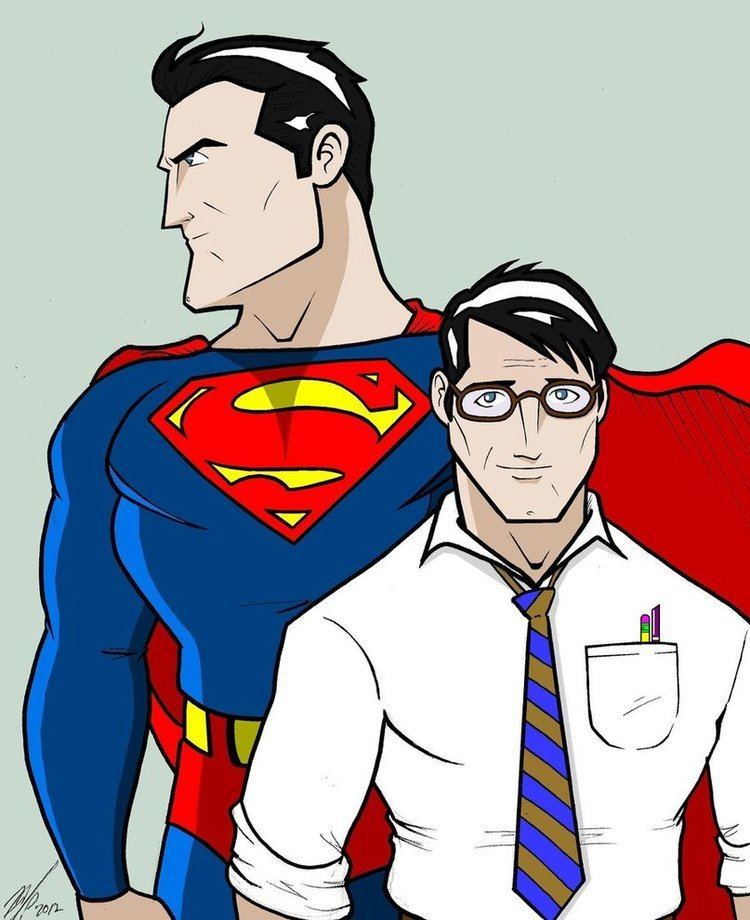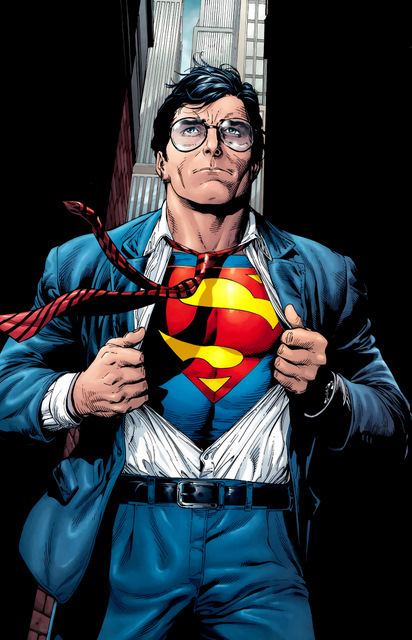 | ||
A secret identity is a person's alter ego which is not known to the general populace, most often used in fiction. Brought into popular culture by the Scarlet Pimpernel in 1903, the concept is particularly prevalent in the American comic book genre.
Contents
- My secret identity season 1 ep1 part 1
- History
- Purpose
- The question of genuine identity
- Keeping the secret
- References

In American comic books, a character typically has dual identities, with one identity being the superhero persona and the other being the secret identity. The secret identity is typically the superhero's civilian persona when they are not assuming the superhero persona. The secret identity is secret, because superheroes must keep this identity hidden from their enemies and the general public to protect themselves from legal ramifications, pressure, or public scrutiny, and also to protect their friends and loved ones from harm secondary to their actions as superheroes.

The secret identity commonly consists of the superhero's given birth name and may involve an occupation they had before becoming a superhero. This is in contrast to the superhero identity, which often utilizes a pseudonym and sometimes a mask to complete a costume to conceal the superhero's secret identity. To help further preserve the anonymity of secret identities, characters may use eyeglasses, particular clothing, or display a different set of personal characteristics when assuming the secret identity persona. For example, the superhero Batman's secret identity is Bruce Wayne, a billionaire who is known to the public for his affluent playboy lifestyle. Another example is Superman, who does not wear a mask when he is in costume, but wears eyeglasses and appears mild-mannered when he assumes his secret identity of Clark Kent.

Types of characters that may have secret identities include heroes, superheroes, thieves, villains, supervillains, vigilantes, aliens, and "monsters". A character may have several types of secret identities simultaneously, such as adopted names, undercover identities, and crime fighting code names.

My secret identity season 1 ep1 part 1
History

The use of secret identities dates back to the early 20th century with characters such as the Scarlet Pimpernel (1903), Zorro (1919), and the Lone Ranger (1933). A line in the novel The Scarlet Pimpernel reads, "Because the Scarlet Pimpernel works in the dark, and his identity is only known under the solemn oath of secrecy to his immediate followers." The Scarlet Pimpernel is the name of a chivalrous Englishman, Sir Percy Blakeney, who exhibits characteristics that would become standard superhero conventions, including the penchant for disguise, use of a signature weapon (sword), ability to out-think and outwit his adversaries, and a calling card (he leaves behind a scarlet pimpernel at each of his interventions). By drawing attention to his alter ego Blakeney he hides behind his public face as a slow thinking foppish playboy (like Bruce Wayne), and he also establishes a network of supporters, The League of the Scarlet Pimpernel, that aid his endeavours.

Starting in the 1930s, the concept of crime-fighters, superheroes, and vigilantes (and their adversaries) adopting secret identities became more widespread in dime novels, pulp magazines, comic books, old-time radio dramas, movie serials, and other popular fiction and such characters remain popular to this day. Superman appeared in Action comics in 1938 as one of the forerunners amongst a list of superhero debuts.
Purpose

The artistic purpose of the secret identity on the part of the writers is that it allows the characters to have ordinary lives, which can allow for human drama as well as create tension with the effort needed to preserve the secret. This can include challenges such as throwing off the suspicions of associates who suspect, and the need to quickly improvise means to get out of sight to change identities. And superhuman characters may benefit from an everyman aspect through having a secret identity, giving them a sympathetic link to their audience. For example, Captain Marvel's secret identity is a boy named Billy Batson - a deliberate attempt to play on the daydreams of a young readership.
Some common motivations for a character to keep a secret identity include:
The question of genuine identity
Sometimes the distinction as to which persona is the "real one" may be blurred or confused, as has sometimes been the case with Clark Kent and Superman. In the earliest Superman comics, Clark's primary purpose was to fulfill the perceived requirement that a superhero cannot remain on full duty all the time and Clark thus acted as little more than a front for Superman's activities. In the television series Lois & Clark: The New Adventures of Superman, after Lois Lane learns that Superman is Clark Kent, he discusses his dual identity with her. "Clark Kent is not a disguise. Clark is who I am, while Superman is what I do."
The compromises that Clark still needed to make to secure his alter-egos were limited as the Pa Kent of the Man of Steel comics enthusiastically explains:
"SEE MA? WITH HIS HAIR ALL SLICKERED BACK AND AN OLD PAIR OF MY SPECTACLES, HIS WHOLE FACE SEEMS TO CHANGE. ALL HE NEEDS TO DO IS STOOP A TAD AND HE LOOKS LIKE A WHOLE DIFFERENT MAN. AND SO LONG AS HE'S CAREFUL NEVER TO LET ON THAT HE HAS TWO SEPARATE IDENTITIES, HE'LL BE ABLE TO MOVE FREELY LIKE ORDINARY FOLKS!
Beyond stooping Clark develops a tendency of avoiding conflict. Sometimes this is in order to allow him to change into his alter ego and at other times it is to maintain a consistently non Superman type image but, either way, it opens the "mild mannered" reporter to the charge of cowardice and weakness. Heroes in this type of situation are known to find their love interests developing interests in and even infatuations for their heroic personas.
Superman's face remains uncovered on the justification that he wants to be trusted by people while Batman wears a mask partly because he wants to be feared by criminals. It has also been suggested that Bruce Wayne is "the mask" that Batman wears, meaning that Batman is the true persona, hidden by his public image.
Characters who experience an actual transformation when changing from one persona may have two relatively genuine identities, albeit with additional possibilities of inner conflict. An example of this is Dr. Robert Bruce Banner who needs to seek genuine calmness in order to prevent transforming into the genuinely raging Hulk.
Other characters have abilities that help them conceal their identities such as: shapeshifting or mind control. For instance Marvel's Mystique has an unaltered form with features including blue skin and yellow eyes and yet she has shape shifting and vocal mimicry abilities give her the potential to fit into any required situation.
At another extreme characters like He-Man manage to maintain their secret identities with a change of clothes and a tan.
Other characters either miss the opportunity to conceal their identities or choose to stay public. For instance, the Fantastic Four, who would have always had difficulties concealing the Thing, have typically maintained a public appearance from the Manhattan based Baxter Building.
Keeping the secret
Unless an identity is itself well known, its discovery may not jeopardize the person's safety. When Lex Luthor temporarily body swaps with the Flash (Wally West), the villain realizes—after taking off his mask and looking in a mirror hoping to learn the hero's secret identity—that he has "no idea who this is". If secret identities are to remain secret then others must fail to recognize and subsequently publicize that personas of a character belong to the same person. Identities may be kept secret in a number of ways including:
